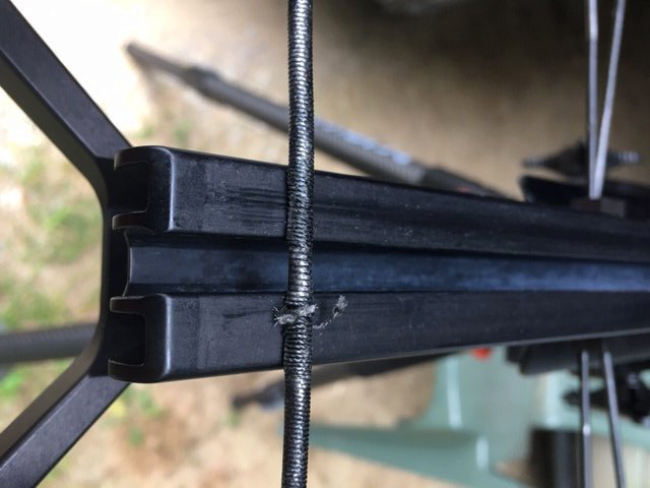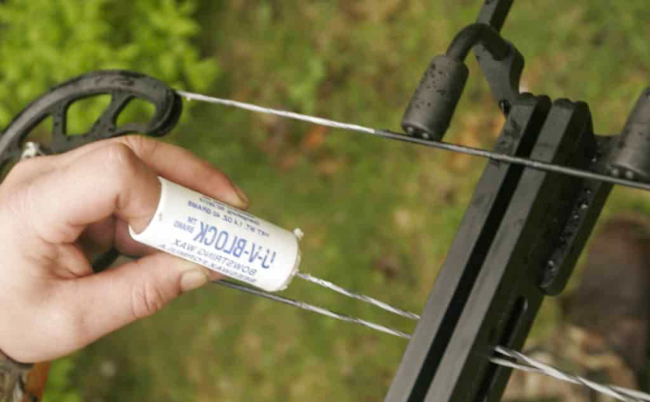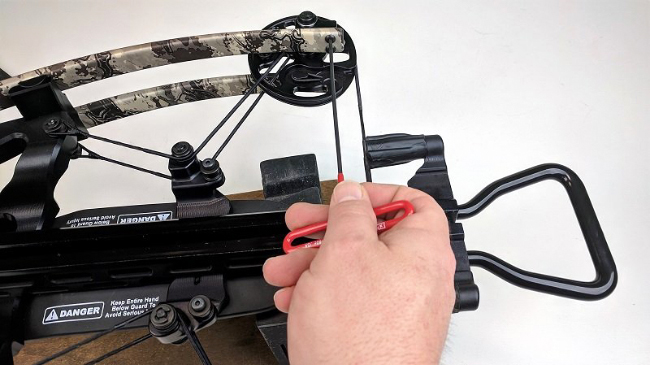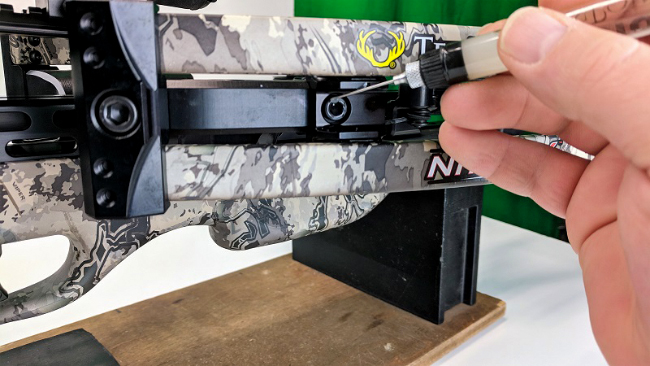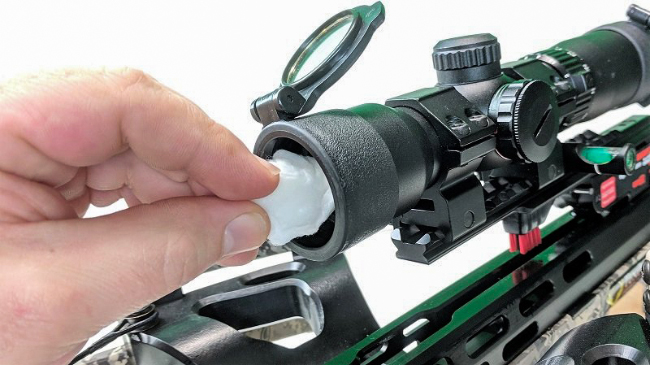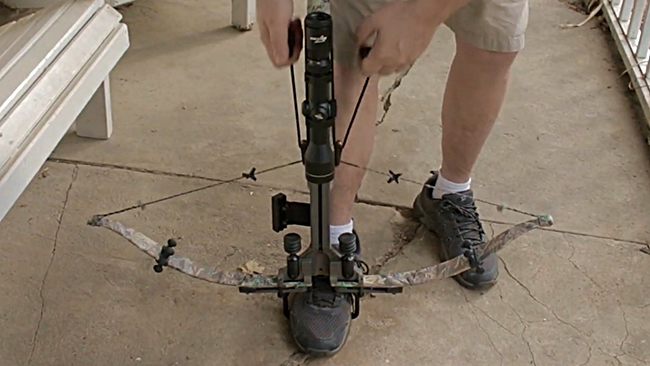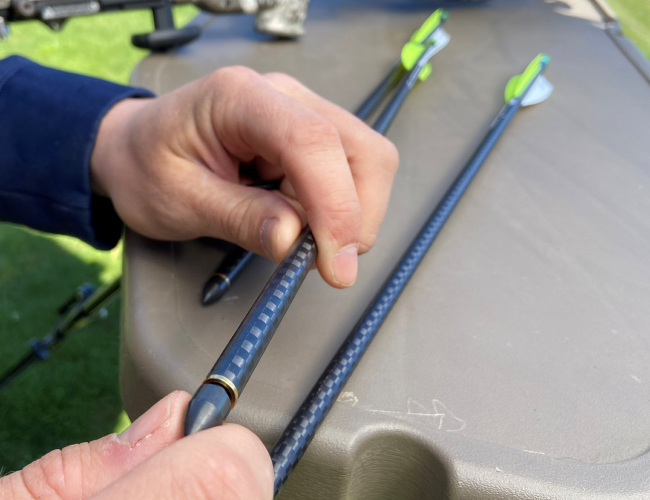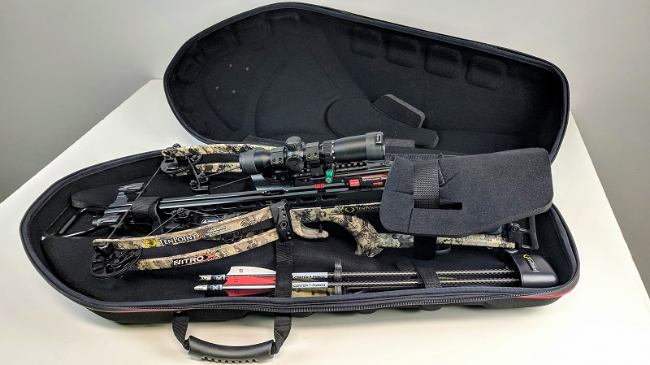If the hunting season is back or you simply wish to do target practice after a dry period, it is time for some crossbow maintenance.
While crossbow maintenance is necessary throughout its life, it is even more important if you are using it after a break. So let’s get right into some of the vital crossbow maintenance tips that you must follow!
Contents
- 1 Remove Dirt or Grit from the Crossbow
- 2 Check String and Cables for Replacement
- 3 Waxing the String and Cables
- 4 Tighten Screws and Bolts
- 5 Preserve Crossbow Parts with Rust-Protective Oil
- 6 Lubricate Moving Crossbow Parts with Oil
- 7 Clean the Crossbow Scope
- 8 Inspect the Crossbow Cocking Mechanism
- 9 Check the Bolts and Arrows Before Shooting
- 10 Store Crossbow in Protective Case
- 11 Inspect Shooting Target
Remove Dirt or Grit from the Crossbow
The first important crossbow maintenance step is to remove the dirt or girt from last season. Another reason for dirt and girt accumulation on a crossbow can be dust from storage during the off-season.
An easier way to remove it is using a cotton cloth soaked in dish soap and water solutions. Gentle wipe all the dirty areas.
However, there is a better and more effective method, i.e., using compressed air in a can which I personally recommend.
Make sure you reach all the potentially dirty areas, including the inside of the rail, nooks, connection points, and the groove.
Performing this step right after returning from a day on the hunting field helps a lot for a well-maintained crossbow. But, more importantly, make sure to get rid of any dirt on the rail if you are going to lubricate the crossbow.
Check String and Cables for Replacement
The next important crossbow maintenance step is looking for defects, faults, physical wear on the string and cables.
Usually, manufacturers recommend replacing the cables and string every two years irrespective of damages and signs of wear.
However, you must inspect the string and cables regularly to ensure optimal crossbow maintenance.
In case you find it difficult to check them yourself, you can always approach a local dealer to inspect them for you.
Waxing the String and Cables
If the string and cables are in good condition, or if you had to get them replaced, the next step is to wax them.
This is the most crucial step in the crossbow maintenance process. Most crossbow manufacturers include the wax in the package.
Use it to wax the string and cables regularly, especially if it’s a compound crossbow. In case you don’t get the wax with the package, get an after-market one.
The frequency with which you should wax the string and cables depends on the type of crossbow and the materials used.
Most reliable and well-reputed manufacturers have included waxing guides with a waxing frequency recommendation.
The general procedure is to apply the wax throughout the length of the cables and the string. Make sure to avoid the area right over the arrow rail.
If you put wax on this area, the trigger box will get gummed up. It is also vital to rub the applied wax using your hands or fingers to ensure it sticks to the string and cables for longer.
Tighten Screws and Bolts
A crossbow is a solid product. Any loose end, whether a nut, bolt, screw, or cable, can hamper the functionality.
The bolts, nuts, and screws can work loose over time when the crossbow is used or even transported.
As a result, you must check the screws, nuts, and bolts from time to time. This crossbow maintenance step ensures that it keeps working in optimum condition.
It is also important to note that over-tightened parts also affect performance negatively.
Preserve Crossbow Parts with Rust-Protective Oil
Just like guns and rifles, crossbow parts are prone to rust formation. As a result, the use of rust-protective oil is imperative for crossbow maintenance.
If you fail to do this step, chances are your crossbow will gradually stop performing up to the mark until it becomes completely useless.
Therefore, if you want your crossbow to give you a long good performing life, use rust protective oil to all parts prone to rust from moisture. Usually, these parts include bolt heads, axles, screw heads, or clips.
Just like over-tightening bolts, make sure to not over-oil the parts. Instead, use a cotton swab to gently put the oil all over the target part.
Also, ensure to clean off any access oil as it won’t do any good where it is not needed, especially in excess.
Lubricate Moving Crossbow Parts with Oil
Several moving parts on a crossbow need to be lubricated on a yearly or half-yearly basis. Failure to do so will lead to poor functioning of these moving parts.
These include the trigger mechanism, which is one of the most vital parts, as well as the axles, safety slide, and dry fire prevention.
Most manufacturers provide a guide or maintenance manual which includes instructions about lubrication.
Refer to it to ensure which parts or areas need to be lubricated and with what frequency. Regular lubrication will allow for protection from moisture and rust formation.
Clean the Crossbow Scope
Crossbow maintenance also includes cleaning the crossbow scope lens from time to time. However, cleaning a crossbow scope is an on-demand thing.
You can do it whenever you notice there is any obstruction or blurriness in the vision. I would recommend using cleaning wipes specifically made for the scope in order to avoid smudging.
If you can keep the lens away from your fingers and other objects, chances are you won’t have to do this step often. However, there is no harm in cleaning the lens frequently in case you need it.
Inspect the Crossbow Cocking Mechanism
Now that all vital parts of the crossbow are cleaned, waxed, lubricated, and replaced, it is time to inspect the cocking mechanism.
Before shooting, cocking a crossbow is the most important process that is undergoing. There are so many parts involved in the cocking mechanism that it is crucial to inspect it before using it.
Ensure all parts are working perfectly fine, including the cords, springs, covers, and handles. You can get replacements for all parts if any of them is damaged.
Check the Bolts and Arrows Before Shooting
Once the cocking mechanism has passed the inspection, it is time to check the bolts and arrows. Potential issues with a crossbow arrow include dents, general damage, or cracks.
Field points can have dented ends if they are too old or used too much. Simply looking at field ends will tell you whether they are in good condition or not.
Moreover, you should also spin the arrow once you attach the field point. This will help you figure out whether there are any bent inserts, ferrules, or shafts.
Arrows that wobble on being spun usually have a part that is bent. You can check out one by one to find out which part is causing the issue.
If the ferrule is bent, you can replace the field point instead of throwing out the whole arrow.
On the other hand, for a carbon arrow, check for cracks or hairline fractures in the shaft. Firing a cracked carbon arrow can cause it to disperse into pieces, causing serious injury to anyone around, including you.
For arrows using aluminum shafts, they are prone to dents, damage, or bents. Firing such an arrow can cause it to move away from the intended direction of the flight.
This can be dangerous for you as well as anyone else standing by. Also, keep an eye on the condition of the nock as well as the vanes.
Store Crossbow in Protective Case
Once you’ve done with all the inspection, it’s time to store your crossbow. And the best place to store it is in a specially designed and protective crossbow case.
Put the crossbow case in a dry, clean, and cool place. In addition, it’s important to protect it from the sun and extensive heat. That way, you’ll preserve the string and cables from rotting.
On the other hand, storing the crossbow in a wet and cold place will increase the risks of moisture and damage parts prone to rust.
Inspect Shooting Target
If you are practicing, make sure to inspect your shooting target for any damages. Often shooting targets tend to deteriorate over time when left on the outside or used too much.
Foam target gradually breaks down to the point where it cannot stop an arrow from passing through, which can be dangerous. For other types of targets, you can inspect for even distribution of the material that is in them.

Hi, my name is Michael Goodman. As a skilled hunter and a man of the field, I will show you some sophisticated, intelligent, and useful hunting methods and techniques.



